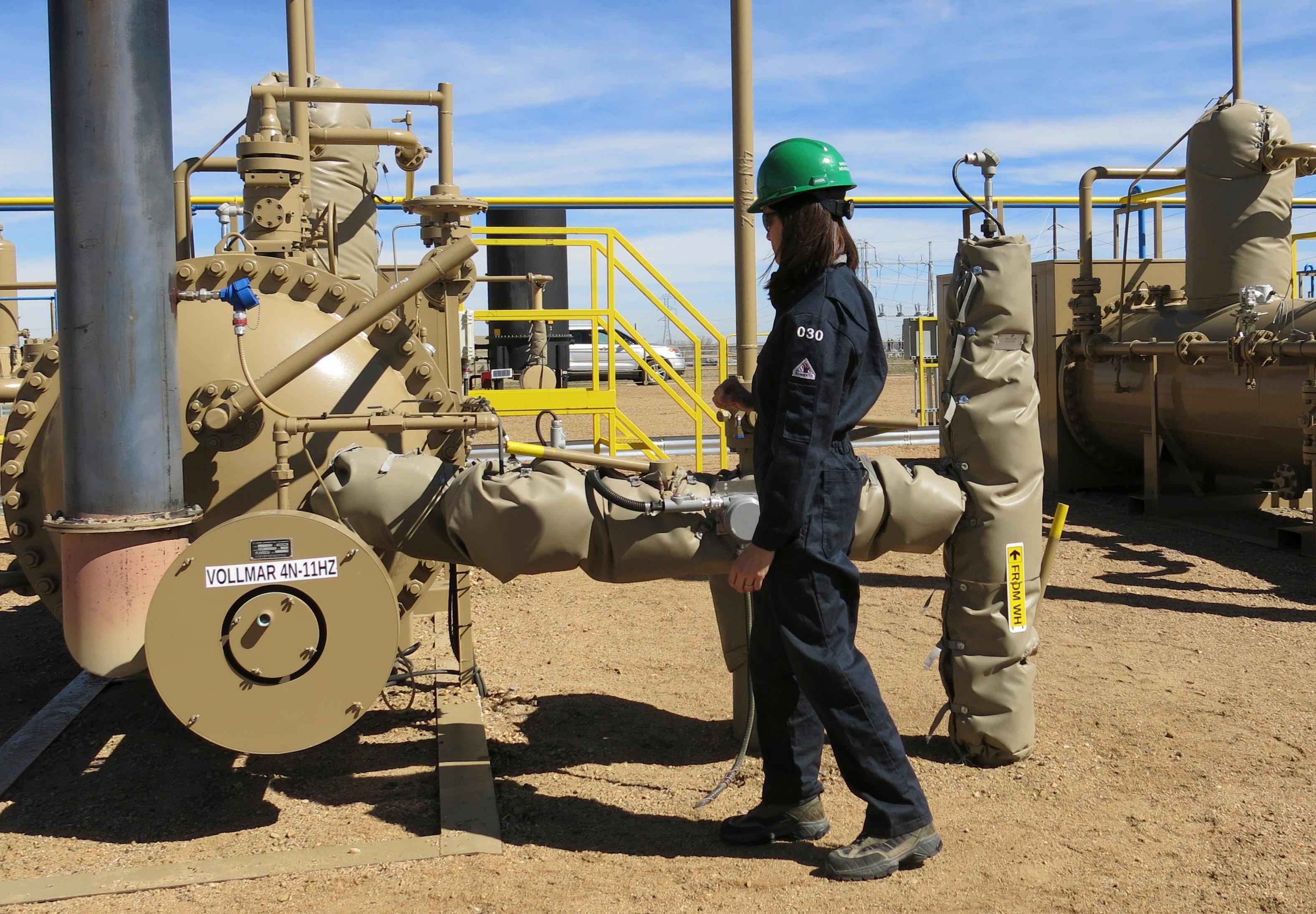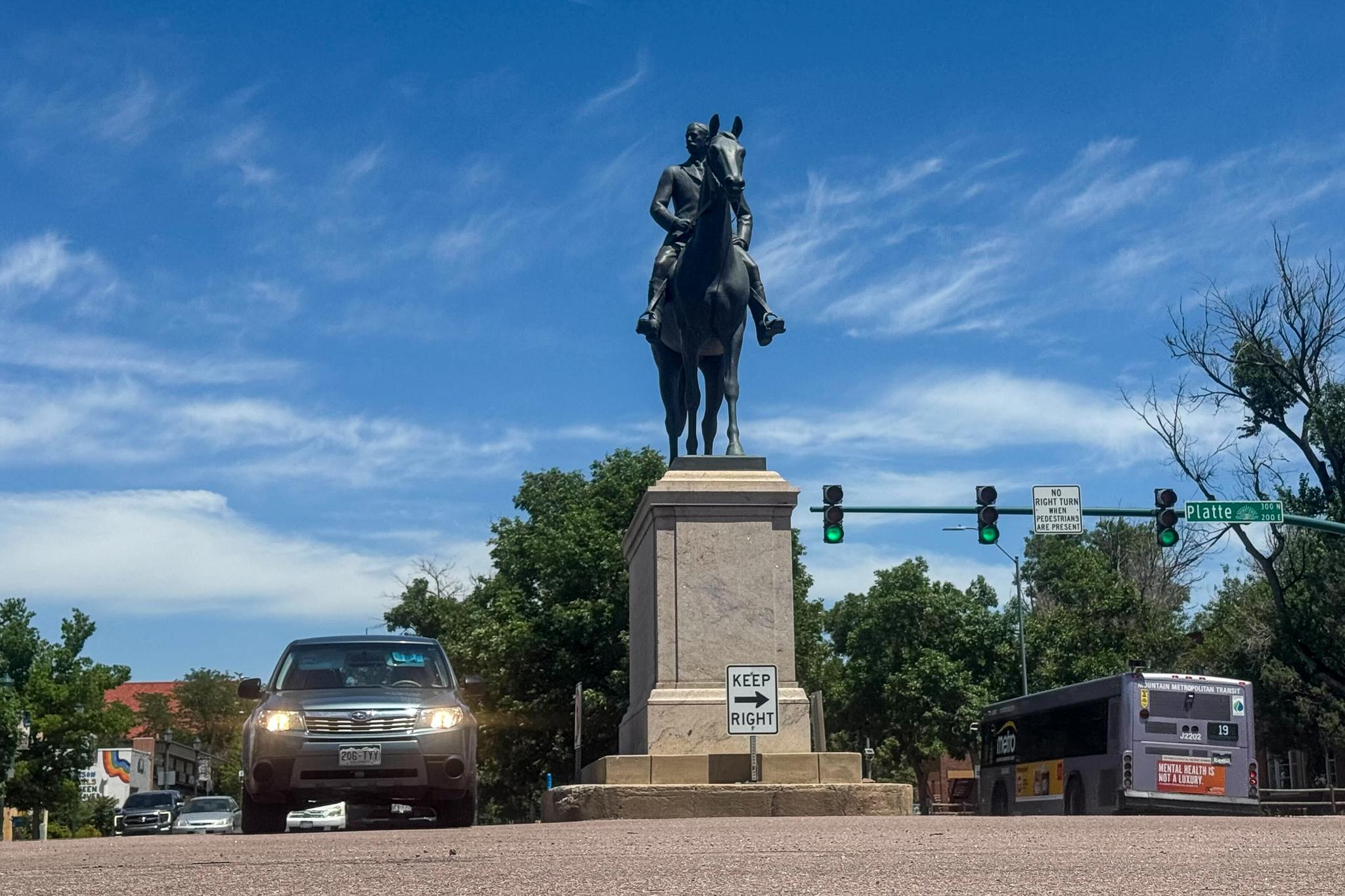
Jeremy Nichols, Climate and Energy Program Director for environmental advocacy group WildEarth Guardians, made an audacious request Thursday of Colorado air quality regulators.
“What opportunities can we embrace to incentivize a decline and ultimately an end to fossil fuel production in this state?” he asked.
In testimony before Colorado’s Air Quality Control Commission, Nichols said the state should not only account for greenhouse gas emissions coming from smokestacks and tailpipes within its borders. Going forward, it should also count emissions from fossil fuels produced in Colorado but consumed elsewhere.
“I want to make sure we don’t lose sight of our full climate footprint,” he testified. “And by that, I refer to the fact that we produce a lot of fossil fuels and send them out of state to be processed, refined and consumed.”
The comment came as Colorado embarks on a massive, decades-long effort to battle climate change.
In the last legislative session, Democrats in control of the capitol passed more than a dozen bills to either reduce the state’s contribution to climate change or manage its consequences. The centerpiece set ambitious targets for reductions in greenhouse gas emissions. The law commits the state to a 26 percent reduction below 2005 levels by 2025, a 50 percent reduction by 2030 and a 90 percent reduction by 2050.
Another one of the laws aims to help the state keep track of its progress, requiring air regulators to collect and report emissions data every two years, instead of the current five-year cycle.
This week, the AQCC gathered for a public meeting to begin to figure out how to enact the suite of legislation. The state plans to spend $465,670 on a “road map” to make specific recommendations, which could include new policies to accelerate a shift to renewables and encourage the adoption of electric cars and water heaters. A final version of the plan is due by September 2020.
But if the state changes how it counts climate-warming emissions, the task before it could end up being even greater — and potentially require drastic regulations for oil and gas producers.
In his testimony, Nichols said that’s exactly why he thinks the state should count the indirect emissions from the fossil fuel industry.
“The science shows that is a reasonable option to embrace,” he said.
In response, Lynn Granger, executive director of the Colorado Petroleum Council, said the idea is “shortsighted” and fails to account for the oil and gas industry’s many efforts to reduce its climate impact in Colorado.
“As production has increased, emissions have significantly fallen,” referring to industry efforts to reduce emissions from the drilling process. “While the work is far from done, our industry is fully committed to further reducing emissions in the years ahead, and we are confident that natural gas will very much be a part of the solution for decades to come.”
Nevertheless, a recent United Nations scientific report found continued fossil fuel production might not be safe for much longer. In just ten years, the scientists estimate the world plans to produce enough fossil fuels to warm the planet beyond 2 degrees Celius, which all but guarantees unprecedented droughts, wildfires and food shortages.
While fossil fuel extracted in Colorado contributes to the problem, accounting for it would have a massive impact on the state’s climate scorecard. State data shows Colorado produced billions of cubic feet of gas and millions of barrels of oil in 2018. Using EPA figures for how that translates to greenhouse gas emissions, the production would account for the release of about 200 million metric tons of carbon dioxide.
For some perspective, that’s about 60 percent more than the state’s total direct emission in 2015, according to the latest draft version of the Colorado Greenhouse Gas Inventory.
Garry Kaufman, director of Colorado’s Air Pollution Control Division, said counting indirect emissions wouldn’t necessarily make it harder for Colorado to meet its climate goals. All progress toward the targets will be measured compared to a 2005 baseline. Since that time, oil and gas production has risen rapidly in Colorado, but coal production has decreased.
“Without running the numbers, I’m not really sure if those things would cancel each other out,” Kaufman said.
Such a change to Colorado’s climate calculus would also have to survive a public comment period and a vote by the AQCC.
Anthony Gerber, who sits on the nine-member commission, worries restricting oil and gas in Colorado could actually end up accelerating climate change by encouraging drilling in other states.
“If we make it more expensive for oil and gas to operate here, the flip side is other states with less aggressive regulatory regimes are now increasing their production,” Gerber said.
Not all commissioners were against the idea, though. Elise Jones, who's also a Boulder County commissioner, said emissions from fossil fuels produced in Colorado must be accounted for.
“They need to be in the ledger because we are not going to solve our climate crisis if we let that loophole happen,” Jones said.
John Putnam, director of environmental programs for Colorado Department of Public Health and Environment, added it’s more likely the state would change how it accounts for methane. The greenhouse gas--a common pollutant from landfills, oil and gas pads and feedlots--traps far more heat than carbon dioxide. The issue is that it also decomposes into carbon dioxide over time.
In most cases, policymakers spread out the warming potential of methane over a century. Putnam said Colorado might instead look at its potency over a 20-year period when it’s far more powerful than carbon dioxide.
If that happened, estimates for how much Colorado’s current methane emissions contribute to climate change could more or less triple.
“Those are the sort of things that we need to sort out to make sure we have a consistent approach that will get us to the climate objectives that the legislature set out in the governor signed,” Putnam said.
State regulators need to figure out how it plans to track greenhouse gas emissions by next June.









